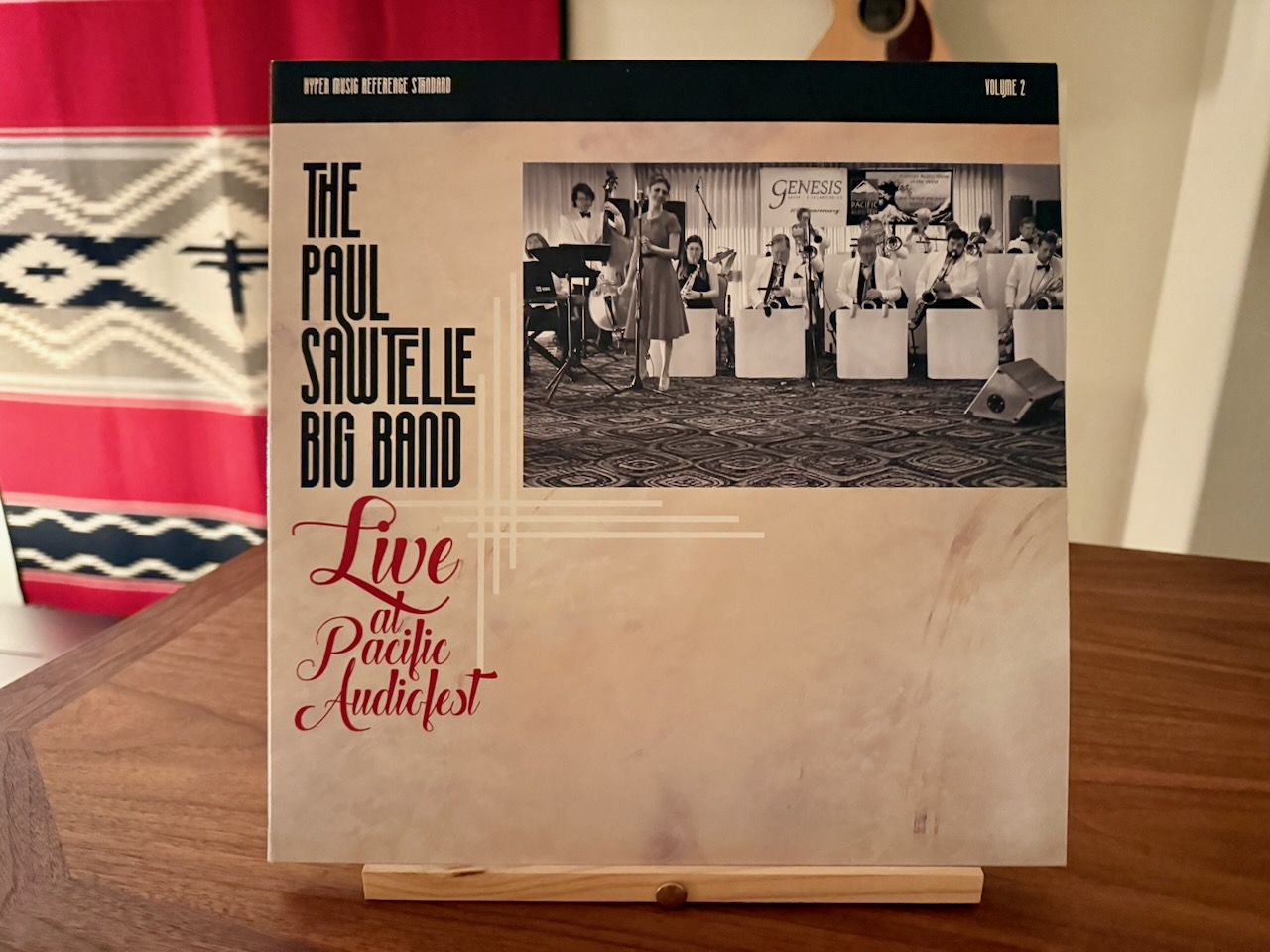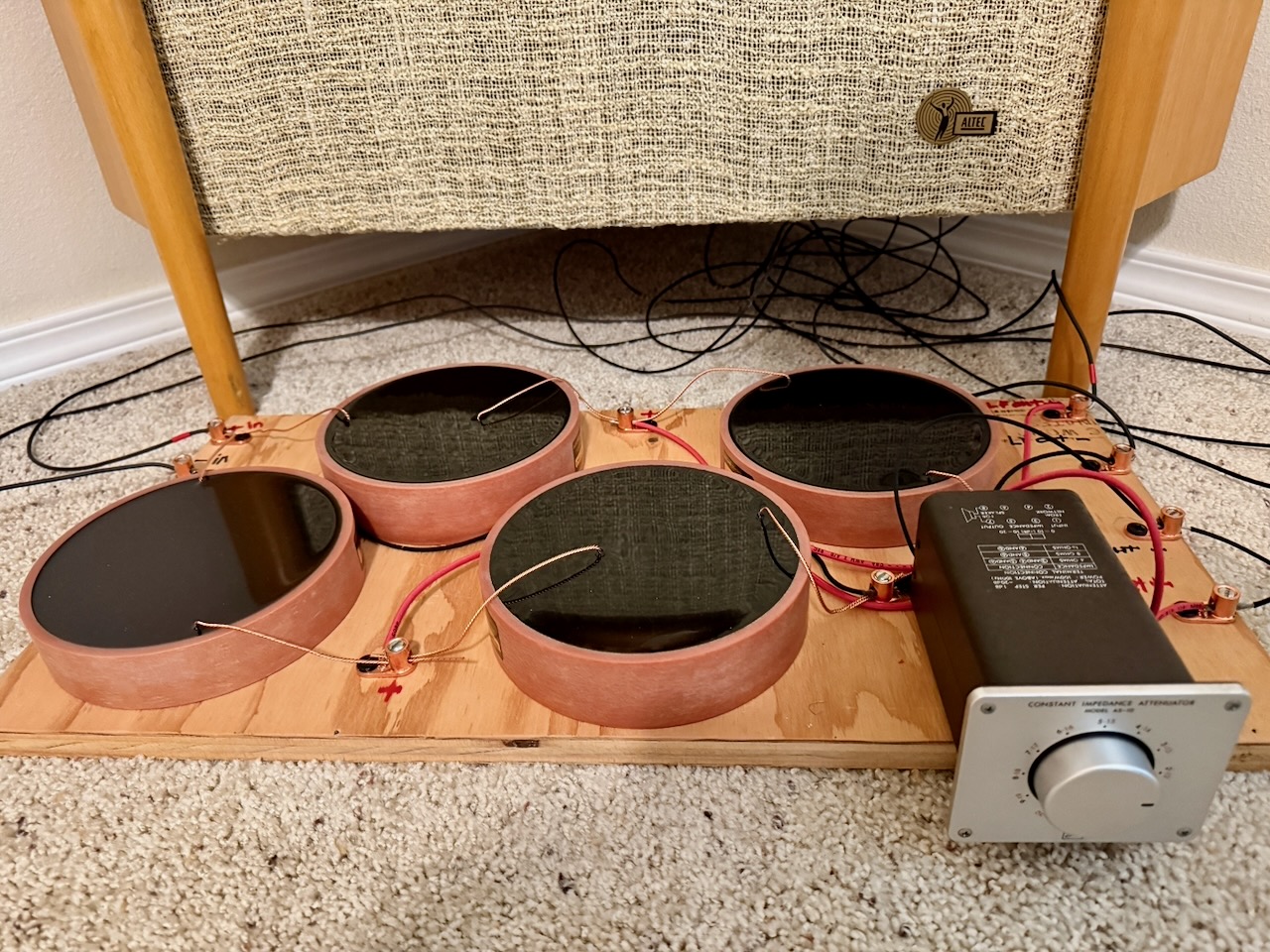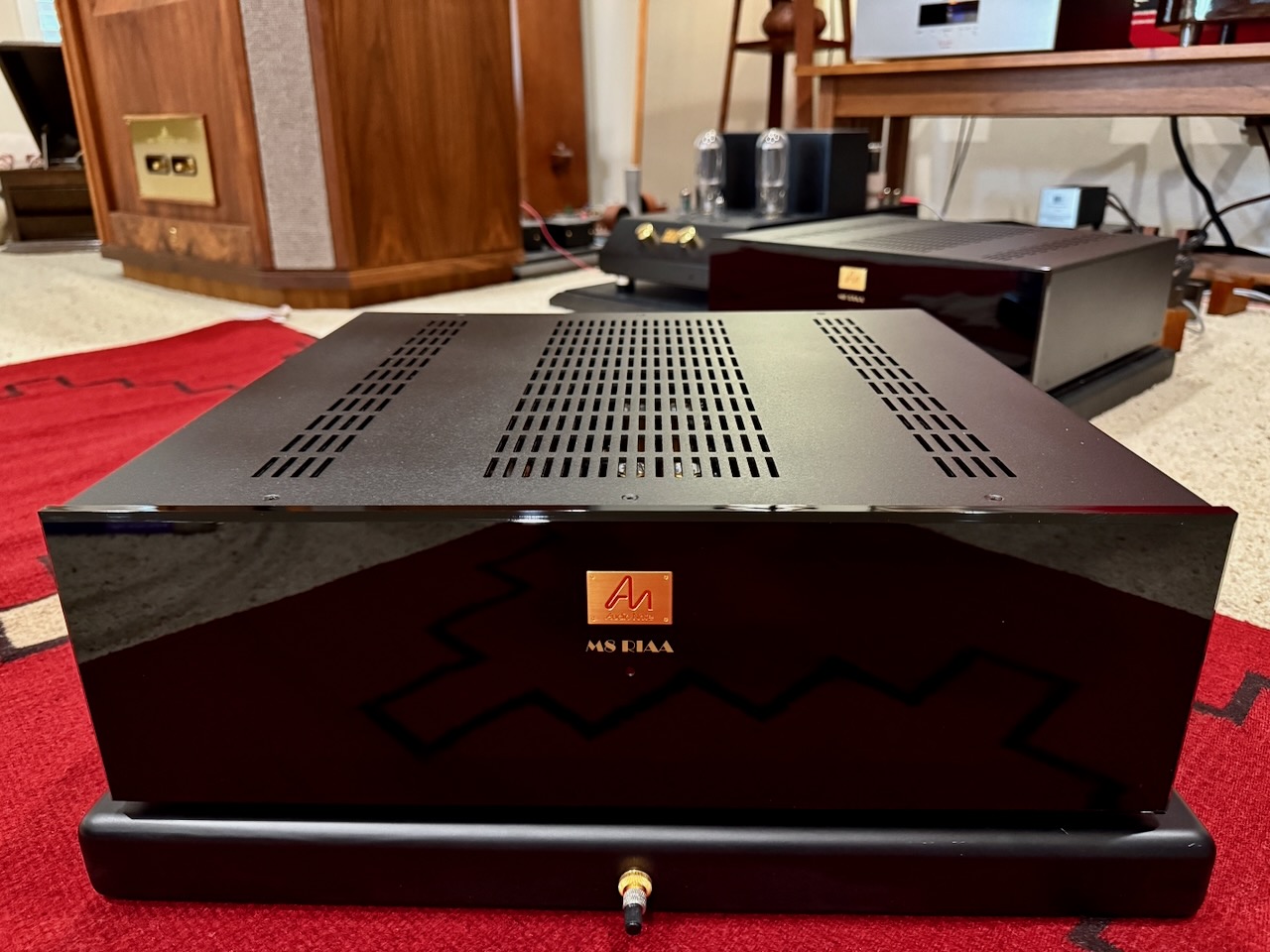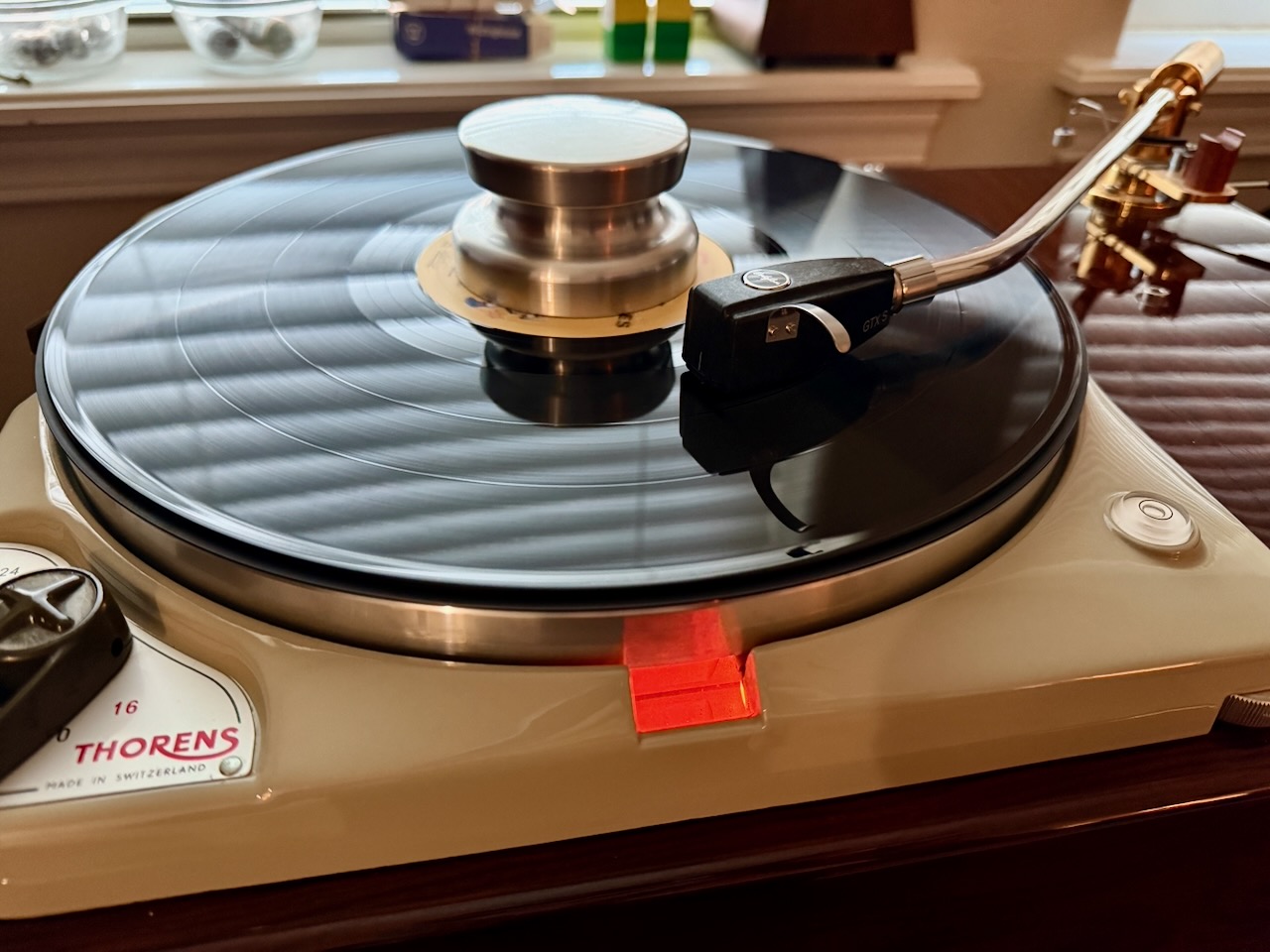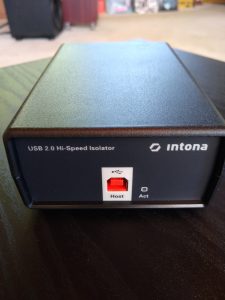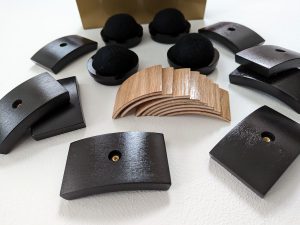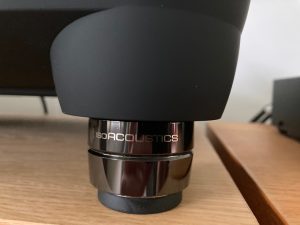RHR-21 Helmholtz Resonator ($938 USD each)
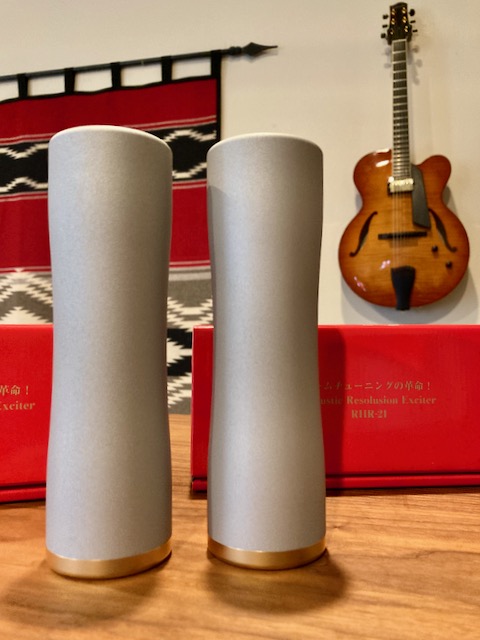
The Acoustic Revive RHR-21 Helmholtz resonator room tuning devices have already received an award from the prestigious MJ Audio Technology journal in Japan for their performance, and I see frequent endorsements from recording studios for the RHR-21 as well.
The RHR-21 Helmholtz resonators are perhaps the most intriguing of this new batch of Acoustic Revive accessories, and the fact that they have already received an award from the prestigious MJ Audio Technology journal in Japan elevated my level of curiosity about them.
I had never heard of using Helmholtz resonators in audio until encountering the RHR-21. Helmholtz resonators are sometimes referred to as "acoustic resonators," and are named after the German physicist, Hermann von Helmholtz, who discovered their principle of operation.
Here's a brief description of how Helmholtz resonators work from the Your Physicist website:
"Helmholtz resonators work based on the principle of wave interference. When a sound wave enters the cavity of a Helmholtz resonator, it causes the air inside to vibrate at the same frequency as the sound wave. The neck of the resonator acts as a tuning fork, determining the resonant frequency of the cavity. When the frequency of the sound wave matches the resonant frequency of the cavity, the amplitude of the sound wave inside the cavity is amplified, while other frequencies are attenuated."
After doing a little research, I found out that Helmholtz resonators are typically used to attenuate low frequency noise in applications like mufflers for internal combustion engines, to reduce noise in HVAC systems, to control sound reflections in concert halls and recording studios, to create acoustic filters, and to improve acoustic comfort in noisy office spaces, for example.
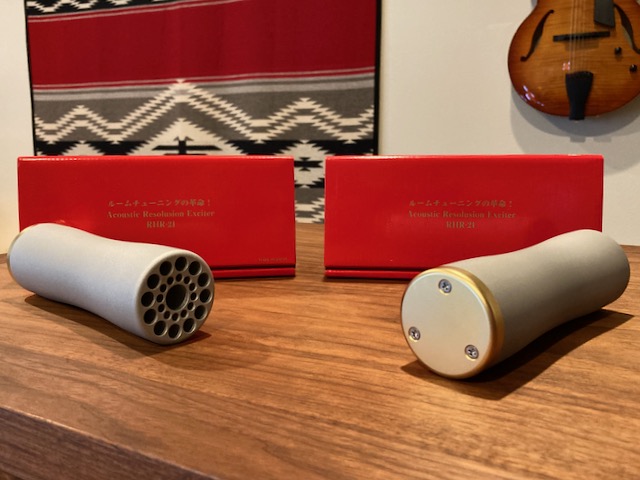
The RHR-21 Helmholtz resonator devices have a cylindrical 'bottle' shape, and are about 6.5 inches (164mm) in height, about 2 inches (51mm) in diameter, and with each one weighing about 2 lbs. (876g).
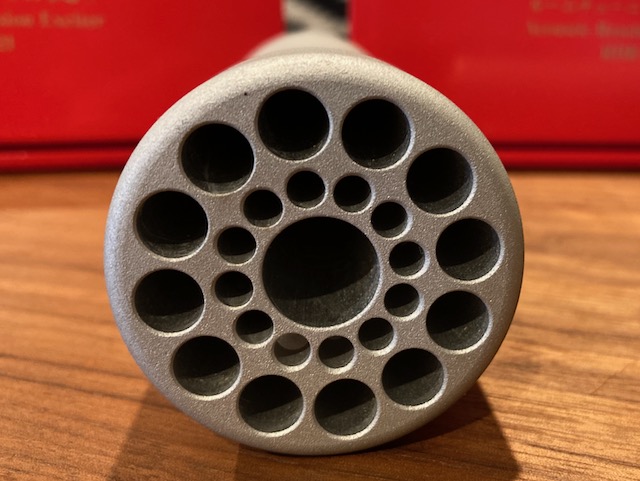
The RHR-21 combines twenty-five Helmholtz resonators optimized for use in the audio spectrum (20Hz to 20,000Hz) into a single chassis.
Ken-san says this about his RHR-21 Helmholtz resonators:
"Although it is small, it has a standing wave elimination effect that exceeds large room tuning. RHR-21 realizes a standing wave elimination effect that far exceeds the large room tuning goods of the listening room while being small due to the special structure of the utility model patent. Just place it in places where stationary waves are easy to accumulate, such as the corner of the room, near the speaker, and the back of the audio rack, to eliminate the stationary wave, and realize high sound quality full of transparency with good visibility."
"Dramatically improve the resolution and phase characteristics of the audio playback sound! RHR-21 not only eliminates stationary waves, but also eliminates unnecessary reflections and band bias in the listening room, and as a result, the playback sound and phase characteristics of the audio are dramatically improved. In addition, the peak of the frequency characteristics eliminates the dip, so the tone and texture of the instrument and voice are dramatically improved. Three-dimensional and clear sound image localization that cannot be realized even with the upgrade of amplifiers and speakers, and the vast sound field reproduction are realized with a fresh and smooth tone and texture."
If I understand Ken-san correctly, the RHR-21 Helmholtz resonators are primarily intended to address standing waves in the low-frequency region of the audio spectrum, flutter echo in the mid and high-frequency ranges of the audio spectrum, and phase and localization issues (which can affect visuospatial performance), all of which are of much interest to audiophiles and recording studios.
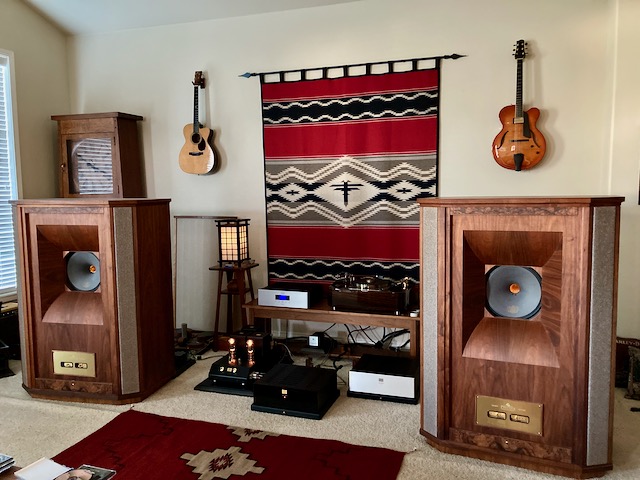
My main music listening room is the living room in my modest sized nuevo bungalow home, a mid-size to larger room that is 27'6'' long by 20'4'' wide, and with variable ceiling height from 9 to 20 feet.
The walls aren't completely parallel (lots of openings and irregularities in the wall surfaces), so this room doesn't really have significant issues related to standing waves or flutter echo, or phase or localization issues. I've positioned my loudspeakers in a modified rule of thirds/fifths positions to maximize their visuospatial performance, with a goal of maintaining a natural tonal balance.
Even in this room's context of few issues, the RHR-21 Helmholtz resonators had a surprisingly large effect on visuospatial performance (soundstage, imaging), and to a lesser but noticeable extent, the resolution of timbral textures and tone. More on this in a moment.
Another positioning case: Another approach to loudspeaker placement in smaller rooms is room boundary positioning, where the loudspeakers are placed into room corners. For this approach it's best to use loudspeakers that are specifically designed for room boundary positioning, such as Audio Note (UK) loudspeakers, for example. This approach reduces or eliminates many of the acoustic issues for smaller spaces, and makes more of the room's space available for living.
This case applies to my audio-visual room, which is a smaller room, but it doesn't feature much in the way of reflective parallel surfaces.
To provide more space in the room, my big vintage Altec A5 Voice of the Theatre loudspeakers are positioned in room boundary positions, with the crossovers modified to optimize them for that placement.

Personally, I'm not a fan of the way most room tuning products look. They're fine in a context where appearance doesn't matter, but in a typical home environment I think most of them look horrific stuck up on the walls and ceilings, and with large bass traps occupying corners.
The RHR-1 Helmholtz room tuning devices are actually attractive looking, small, and very unobtrusive—depending on where you place them. I really like that about them, and they will no doubt be a topic of discussion among audiophiles in any room they are in.
The idea with the Acoustic RHR-1 Helmholtz resonators is that they are easy to use and unobtrusive in appearance. You can get your loudspeakers positioned in your room in the way you want, rule of thirds or fifths, or room boundary positioning, or whatever positioning is dictated by your room size and positioning preferences.
Then all you have to do is position a single RHR-21, or pair of RHR-21s, as described in their installation instructions, which gives you the best results in your room while you are listening to music. Easy, and fun to experiment with.
My rooms are carpeted. I found that that RHR-21s tend to fall over when placed on carpet. If you have carpet you might want to try placing your RHR-21s on a piece of wood, or other harder material like marble, brass, etc., to give them a stable base. If you have hardwood floors the RHR-1s should be stable when placed directly onto the floor.
Here's the diagrams provided by Acoustic Revive of recommend positions for the RHR-1s.

"RHR-21 installation examples ※ Please install the shallowest hole towards the listener."

In my main music listening room I didn't hear what I was expecting to hear when the RHR-21s were positioned as recommended by Acoustic Revive.
My main music listening room doesn't really have issues with low-frequency standing waves, or flutter echo in the mid- to high-frequency parts of the audio spectrum, so I wasn't really able to evaluate their performance in that context.
In this room and audio system the RHR-1 Helmholtz resonators made a large difference in the visuospatial performance (soundstage and imaging), as well as a notable difference in transparency, along with more natural tone and texture of vocals and instruments.
I had a non-audiophile friend stop by to visit. He spotted the RHR-21s while we were chatting and listening to music, and enjoying a spot of Macallan 12. He asked me about them. I told him that they were passive devices that influenced the acoustic properties of the room.
I walked over to pick up the RHR-21s from their positions, and walked back to hand them to him for a look-see when I heard him utter a "Whoa!" He heard a significant change in the room's sound as I walked across it with the RHR-21s in hand. That took me by surprise. When someone who is not a trained listener hears a large effect, there is certainly something going on … hmmm.
I tried the RHR-21s as singles and doubles in all the positions recommended by Acoustic Revive.

As an example, with the live recording of the Bill Evans Trio, Bill Evans At Town Hall, as "I Should Care" began to play, I first heard a change in the way audience applause sounded with the RHR-21s in the system.
As I moved the RHR-21s around to the various recommended positions, I could hear the amount of resolution change. In some positions the instruments (and audience) sounded more resolved, others less so. Some positions provided more natural tonal quality, others less so. Some positions provided a wider soundstage, others narrowed it. Some positions compressed the depth of the soundstage, and others increased it. Some positions improved imaging, and others diminished imaging.
I noticed the instruments sounded more naturally live-like in terms of tone and timbre, in some positions, but less so in others. In some positions Bill's piano, Chuck's bass, and Arnold's drums had more body, and more nuance, and in other positions less.
I suspect you will experience even greater changes in your audio system's performance than I did if you have standing waves in the low-frequency region of the audio spectrum, or flutter echo in the mid and high-frequency ranges of the audio spectrum.
In my living room I found the RHR-21 Helmholtz resonators capable of making a significant positive difference in the visuospatial performance of my audio system. It took time and experimentation to find the best position(s) in my living room, but it provided fun listening experiences.
Each room, audio system, and personal listening preferences will favor particular positioning's of the RHR-21s, so you just have to work through them all and figure out which one works best for you.

Next I thought I'd give the RHR-21s a try in my audio-visual system, which has the loudspeakers located in room boundary positions (corners). This requires different of the positioning RHR-21s than in most of the positions recommended by the Acoustic Revive instructions.
A couple of examples: I watched-listened to the movie Avatar, and the musical documentary series, American Epic Sessions, on Blu-ray discs so I could get a feel for what the RHR-21s could do in a room boundary system.
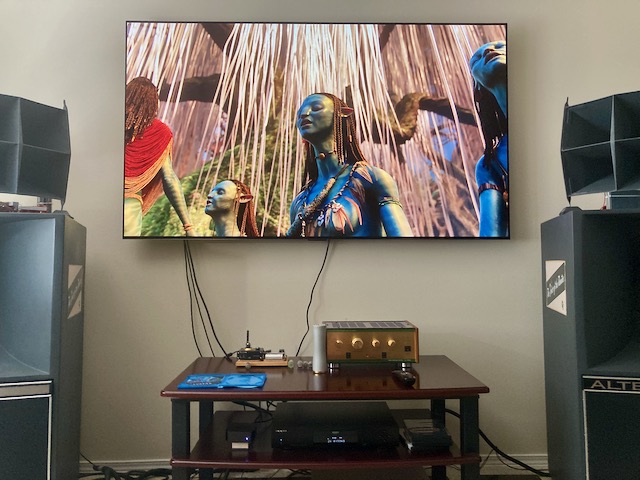
In the "Tour Macto" scene from Avatar I tried several different placements of the RHR-21. Generally speaking, the audio for Avatar provides a wide and deep soundstage with lots of interesting voice, music, and Foley effects arrayed throughout the sound field.
With one RHR-21 placed in the middle of the top shelf of my equipment stand, I could hear a smoother overall presentation, with some of the choral voices popping out of the soundtrack and becoming more evident.
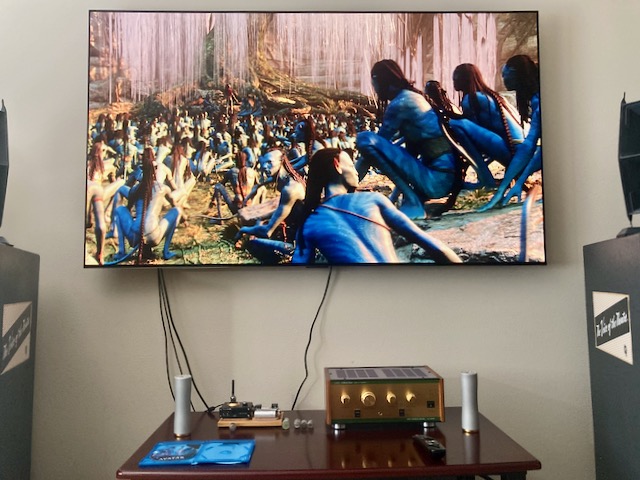
With two RHR-21s placed in the middle of each side of the equipment rack I heard a slightly different presentation, this time a little more aggressive and forward sounding, but with more resolution of the individual choral images. I didn't really care for this positioning.
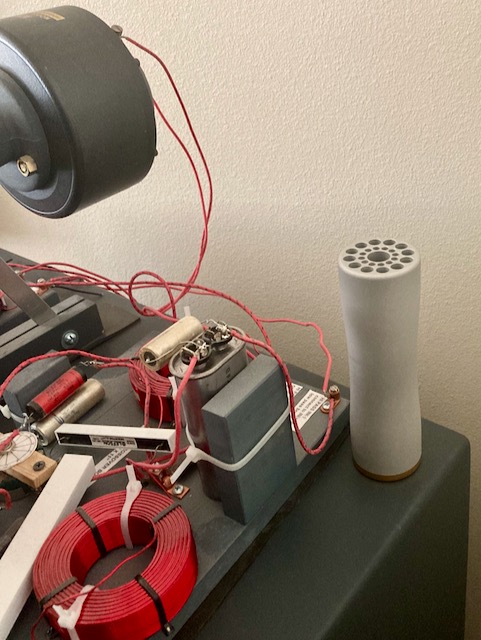
For a final positioning experiment, I placed one RHR-21 on top of the bass cabinet of each of my A5s, as deep into the room corner as the cabinets allowed. This position provided the smoothest overall presentation, improved articulation of all the choral vocals, and provided an overall more spacious presentation, along with a deeper soundstage.
The change in sound quality in each of these positions was relatively subtle, but noticeable. The change was not as large as I experience when changing to a different set of vacuum tubes in a DAC or amplifier, for example.
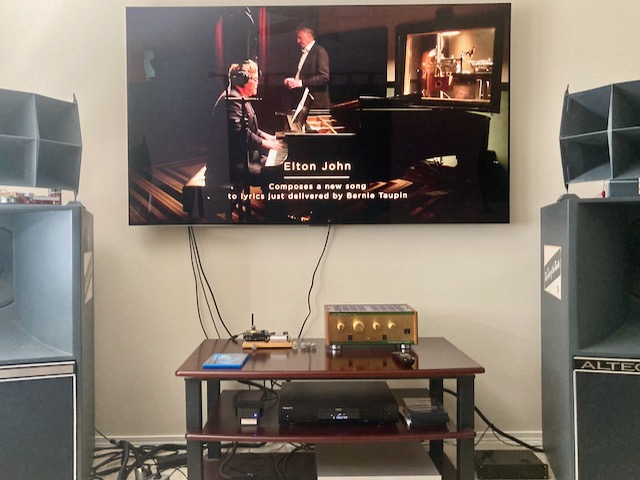
My next example is Elton John and Jack White playing "Two Fingers of Whiskey" on the American Epic Sessions.
If you don't have a copy American Epic Sessions I highly recommend you get a copy. Produced by Jack White and T Bone Burnett, with Robert Redford narrating, all the music is recorded on a fully restored Western Electric, electrical era of recording, direct-to-disc recording system from 1925. These are contemporary monaural recordings made with electric era recording methods and equipment, and it's good, really good—I love this music.
Featuring musicians Nas, Alabama Shakes, Elton John, Willie Nelson, Merle Haggard, Jack White, Taj Mahal, Ana Gabriel, Pokey LaFarge, Beck, Ashley Monroe, Los Lobos, The Avett Brothers, Bettye LaVette, Rhiannon Giddens, Raphael Saadiq, Edie Brickell, and Steve Martin, all singing America's music from the 1920s in beautiful Western Electric electric era direct-to-disc sound quality.

On "Two Fingers of Whiskey" the change wrought by an RHR-21 on top of each bass cabinet of my A5s, as deep into the room corner as the cabinets allowed, was dramatic, which took me by surprise. The sound quality was transformed, becoming richer, more tonally correct, and just more musically enjoyable.
This is a monaural recording, and I wasn't expecting to hear much of a difference. The difference in sound quality turned out to be rather profound.
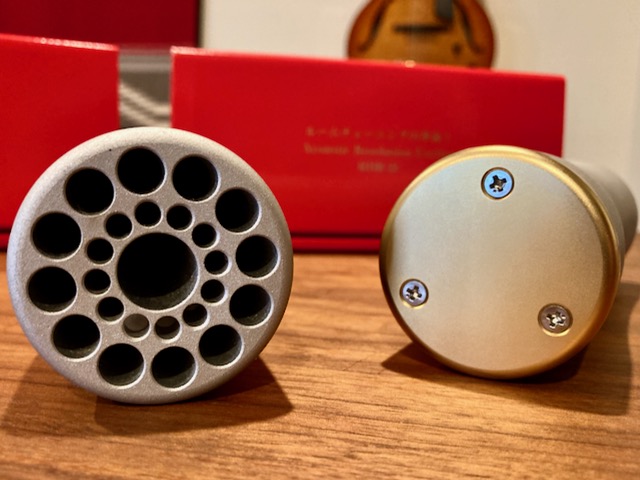
This was my first exposure to Helmholtz resonators, and they are indeed intriguing devices.
I suggest you try one RHR-21 in your system first if you're using an audiophile-style rule of thirds/fifths loudspeaker setup. If you like what you are hearing, then add a second RHR-21 for the maximum effect.
With my room boundary positioned loudspeakers, I thought that two RHR-21s located in the room corners seemed to provide the optimum effect, so that's what I would recommend for loudspeakers in a room boundary system.
The Acoustic Revive RHR-21 Helmholtz resonators can work magic, or not do that much, depending on your room, source material, and audio system.
I recommend you work with a local dealer that will let you try them in your room/system, and return them if they don't work out well for you. Also, The Cable Company has a lending library of Acoustic Revive products if you don't have a local dealer that carries Acoustic Revive products.
Recommended with the above caveats.
Please click on the link below to go to the next page.




